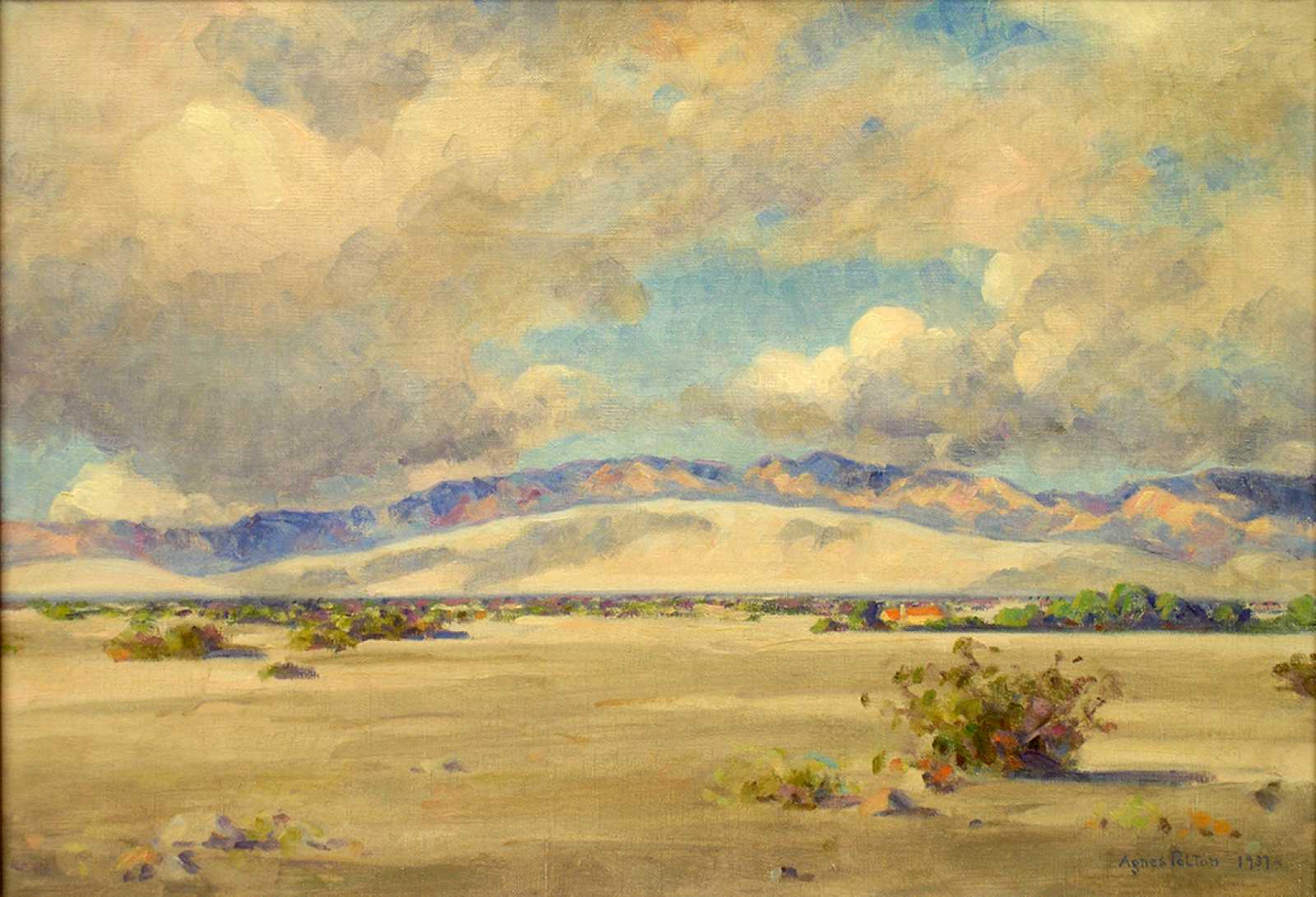Get Inspired by Agnes Pelton
Agnes Pelton (American, 1881-1961) Between Storms, Edom Hill, 1937, oil on canvas, 14 x 20 inches. Museum purchase with funds provided by the General Acquisition Fund for Western Art, 2-1995.
Agnes Pelton was inspired by the unique colors, light, shapes, and forms of the desert landscape in the Palm Springs area. What views inspire you?
Go for a walk and observe your surroundings, and then create your own landscape image.
A landscape is an image of land or scenery that is typically divided into three parts:
- Foreground - The area that is closest to the viewer; the front of the scene.
- Middleground - The middle of the image; also known as the horizon line where the land stops and the sky begins.
- Background - The furthest area in the scene. It is behind the main object and might include the sky or mountains.
Find out more about Agnes Pelton.
Supplies
- Pencil
- Paper
- Coloring supplies
- Optional: camera or camera phone
Step 1
Find your landscape scene. Observe your surroundings while you are outside on a walk or while exploring your own yard. Look at your setting and think about how your scene shows a foreground, middleground, and background.
- The foreground is the front area of the scene and might include plants, rocks or animals.
- The middleground is the horizon line where the land and sky meet; it might include trees or bushes in the middle area of the scene.
- The background is the farthest part of the scene and might include the sky and mountains.
Step 2
Sketch or take photos of possible scenes, and then select one that you would like to use to create your landscape.
Step 3
When you are ready to create your landscape, start by lightly drawing a line across your paper to divide your scene into the foreground, middleground, and background.
The most important line is the middleground. This line helps with your layout, and can be used to create space in your scene.
Space is often created by larger objects in the foreground to show that they are closer, and smaller objects in the background to show that they are far away.
Start by drawing or outlining the most important features in your scene. Do not worry about too much detail yet.
Step 4
Once you have finished drawing your landscape, add details and color with colored pencils, markers, watercolor paints, or other materials to complete your landscape.







